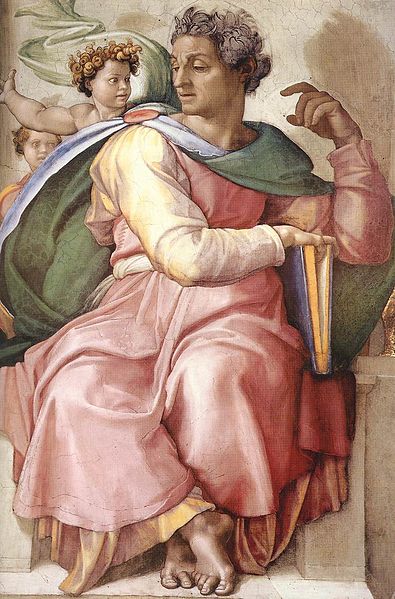Now that I'm home I'm sooo itching to start a new drawing. I have two I want to do NOW but I had to help my husband today (he ripped his cornea) and the kids have off school tomorrow. Drat. Maybe I can sneak away on Sunday to the studio. I'd rather have a cuple of things I know I am going to da at any rate instead of artists block and not knowing what to work on!
During the flight to and from Portland I read the book Michelangelo and the Pope's Ceiling by Ross King. I seriously enjoyed it, not surprising as it is a New York Times Bestseller. The nonfiction book is a historical look at the making of the Sistine Chapel ceiling frescoes. Ross King also wrote Brunelleschi's Dome which I liked but not nearly as much as the Michelangelo book. I think partially because I really related to the explanations of the frescoe painting process and Michelangelo's touchy psyche! Not to mention all the anecdotes about Raphael who was painting frescoes in the Pope's chambers nearby. Ross King also ties in the relationships of Michelangelo and his family (through letters), the Pope, and other artists and apprentices.
Another aspect I particularly liked in this book was how meticulously Ross King investigated where Michelangelo borrowed from or was insoired by when depicting the many figures on the
ceiling.
This is something I've had many conversations with other artists about: when is it ok to borrow and when is it borrowing too much? Michelangelo borrowed a lot from other artists (mostly ancient Greek or Roman sculptures) to create the amazing amount of poses on the ceiling. My favorite is the one he borrowed from himself... does the picture below remind you of a rather famous statue?

Michelangelo's work, according to Ross, was something new and exciting during his day.
Michelangelo sought to creat
e images of powerful men in writhing energetic poses. He was a bit of a phenomenon. Raphael, painting nearby in the Pope's chambers, even sought to emulate his peer and bring some of this energy into his own work. You can see the more energetic figures (than his usual) in The Expulsion of Heliodorus below. Of course it doesn't look like a Michelangelo... it looks like a Raphael inspired by Michelangelo. There is the key to the question I asked before - when is it ok to borrow? The answer is when you truly are inspired by someone else - it is ok to borrow – but not copy. It should read as something made by you and not the other artist.
I often get inspired by someone else’s artwork, usually a pose or lighting. I start by posing my subject similarly and then let my natural instincts alter it and make it my own.

Related Posts:


5 comments:
Very interesting comment.
For me a creative person is not doing the same thing as anyone else only better, they are doing something different, recognizable not describable.
Perhaps it is a heart thing. In your heart you know you borrowed some things added others and yet it took on a life of its own and it is yours.
The larger your body of knowledge the more you have to borrow from and the more you know you are borrowing.
Pretty much if you do not have angst about being original you probably are not.
I am in the throws of this, now. I am drawing an illustration for an etching on a memorial stone, and using photographs from WW II for the raw data.
Some tricks I am using, since I am wanting to avoid the material that some unnamed army photographer created, are to utilize the information, but repose the figure with my wooden mannequin.
The funny thing is, the photos are probably open source by now, but the urge is strong to not copy someone else's work - even a govt. photographers!
Wasn't the whole Renaissance thing about being derivative of the classic era? Even today, different nations have different takes on authenticity - sometimes subtle and sometimes dramatic.
Thanks for this Nicole. I've always been a Michelangelophile so will have to read this one! I read the Dome book, and liked it.
I always worry about my subconcious sneaking in something I've seen in the past, into my current work. I think everything is sort of derivative, and its hard to do something completely "new", no matter how hard you try. But outright copying ~ no way!
Good last point Michael!
Casey - yep they sure were looking back during the Renaissance! Look at how far you are going there Casey not wanting to copy fro the photograph! :-)
I get the same way Paula!
Post a Comment